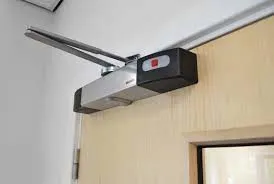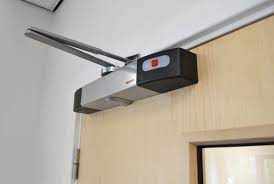Fire Door Closers: Ensuring Safety and Security

Looking for reliable fire door closers to enhance safety and security? Discover the importance of fire door closers, their various types, installation process, maintenance tips, and frequently asked questions in this comprehensive guide.
Protecting Lives and Property with Fire Door Closers
In the event of a fire, every second counts. Properly functioning fire door closers are critical in containing fires, limiting their spread, and providing safe evacuation routes. Fire door closers are essential components of fire safety systems, ensuring that fire doors automatically close and latch securely in case of a fire. This article explores the significance of fire door closers, the types available, installation guidelines, and important maintenance practices.
The Importance of Fire Door Closers

Fire door closers are designed to prevent the rapid spread of fire and smoke within a building. They help compartmentalize different areas, creating fire-resistant barriers that can contain the flames and give people valuable time to escape. By automatically closing and latching fire doors, fire door closers eliminate the risk of human error or delays during an emergency.
Types of Fire Door Closers
Several fire door closers are available, each suited to specific applications and door types. Understanding the different types can help you choose the right one for your needs.
Overhead Concealed Door Closers
Overhead concealed door closers are hidden within the door and frame, providing a clean and aesthetic appearance. They are ideal for commercial buildings, hotels, and high-end establishments with a desired seamless look.
Surface-mounted Door Closers
Surface-mounted door closers are visible and installed on the interior surface of the door and frame. They are versatile and widely used in various applications, including schools, hospitals, and public buildings.
Floor-spring Door Closers
Floor-spring door closers are installed in the floor beneath the door and are suitable for heavy doors or those with high foot traffic. They offer exceptional durability and are often found in commercial settings.
Spring Hinges
Spring hinges are an alternative option to door closers. They are designed to self-close the door without the need for additional hardware. Spring hinges are commonly used in residential settings.
Installing Fire Door Closers: A Step-by-Step Guide
Proper installation is crucial to ensure the effectiveness and reliability of fire door closers. Follow these steps to install your fire door closer correctly:
-
Step 1: Gather the Necessary Tools: Before beginning the installation process, gather the required tools such as a power drill, screwdriver, tape measure, and marking pencil.
-
Step 2: Identify the Door Type: Determine whether you have an overhead-concealed, surface-mounted, or floor-spring door closer based on your specific door type.
-
Step 3: Prepare the Door and Frame: Inspect the door and frame for any damage or misalignment. Repair or adjust as necessary before proceeding with the installation.
-
Step 4: Position the Door Closer: Follow the manufacturer's instructions to position the door closes correctly. Ensure it aligns with the markings on the door and frame.
-
Step 5: Mark and Drill Holes: Mark the spots where the door closer and brackets will be installed. Drill the necessary holes for the closer body and brackets.
-
Step 6: Install the Closer and Brackets: Attach the door closer body and brackets to the door and frame using the provided screws. Ensure they are securely fastened.
-
Step 7: Adjust the Closing Speed: Most door closers have adjustable closing speed settings. Follow the manufacturer's instructions to set
